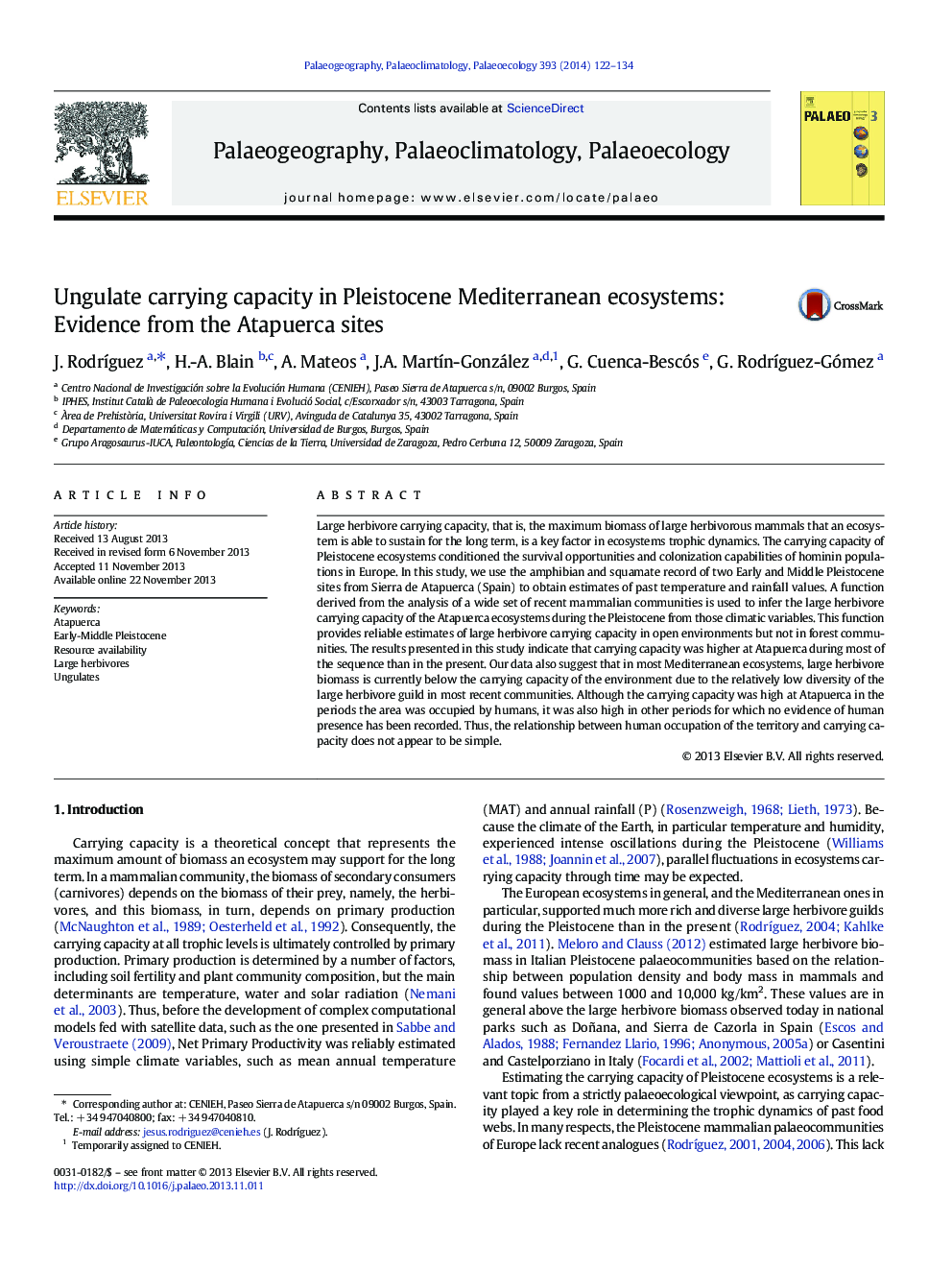| کد مقاله | کد نشریه | سال انتشار | مقاله انگلیسی | نسخه تمام متن |
|---|---|---|---|---|
| 4466481 | 1622197 | 2014 | 13 صفحه PDF | دانلود رایگان |

• A function to estimate carrying capacity from rainfall and temperature is presented.
• Past temperature and rainfall values are estimated from fossil herpetofaunas.
• Carrying capacity was higher at Atapuerca in the Pleistocene than in the present.
• Variations in human occupation are not related to changes in carrying capacity.
Large herbivore carrying capacity, that is, the maximum biomass of large herbivorous mammals that an ecosystem is able to sustain for the long term, is a key factor in ecosystems trophic dynamics. The carrying capacity of Pleistocene ecosystems conditioned the survival opportunities and colonization capabilities of hominin populations in Europe. In this study, we use the amphibian and squamate record of two Early and Middle Pleistocene sites from Sierra de Atapuerca (Spain) to obtain estimates of past temperature and rainfall values. A function derived from the analysis of a wide set of recent mammalian communities is used to infer the large herbivore carrying capacity of the Atapuerca ecosystems during the Pleistocene from those climatic variables. This function provides reliable estimates of large herbivore carrying capacity in open environments but not in forest communities. The results presented in this study indicate that carrying capacity was higher at Atapuerca during most of the sequence than in the present. Our data also suggest that in most Mediterranean ecosystems, large herbivore biomass is currently below the carrying capacity of the environment due to the relatively low diversity of the large herbivore guild in most recent communities. Although the carrying capacity was high at Atapuerca in the periods the area was occupied by humans, it was also high in other periods for which no evidence of human presence has been recorded. Thus, the relationship between human occupation of the territory and carrying capacity does not appear to be simple.
Figure optionsDownload high-quality image (383 K)Download as PowerPoint slide
Journal: Palaeogeography, Palaeoclimatology, Palaeoecology - Volume 393, 1 January 2014, Pages 122–134